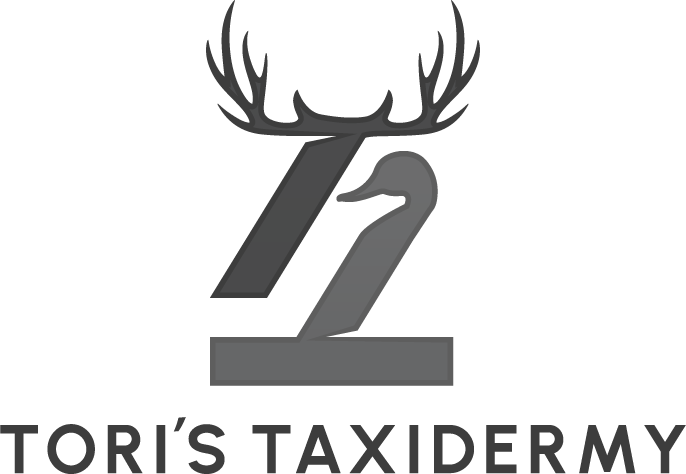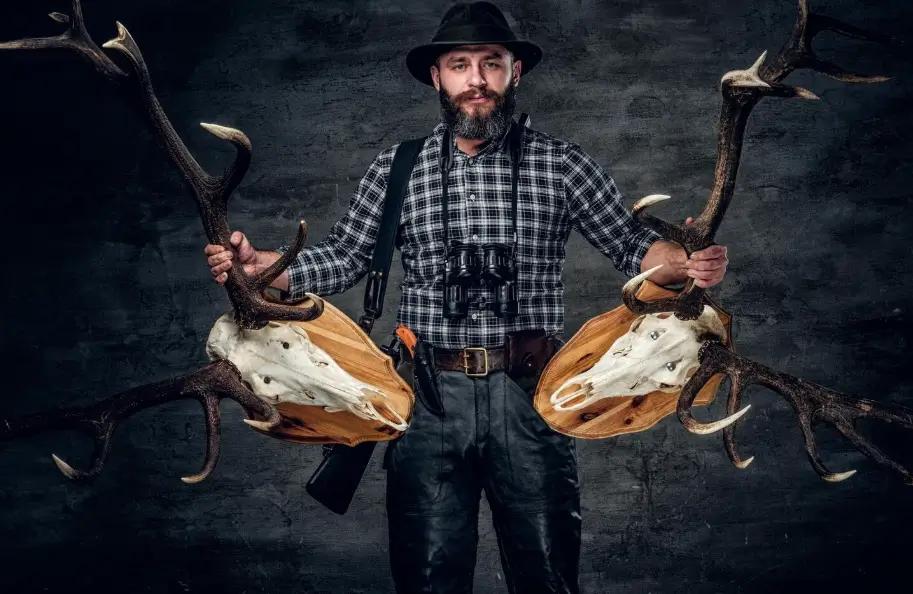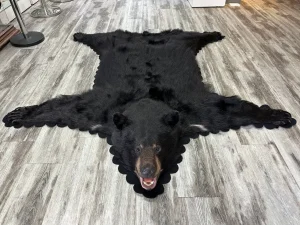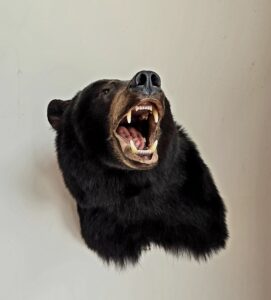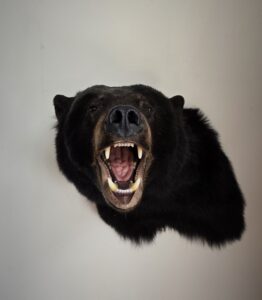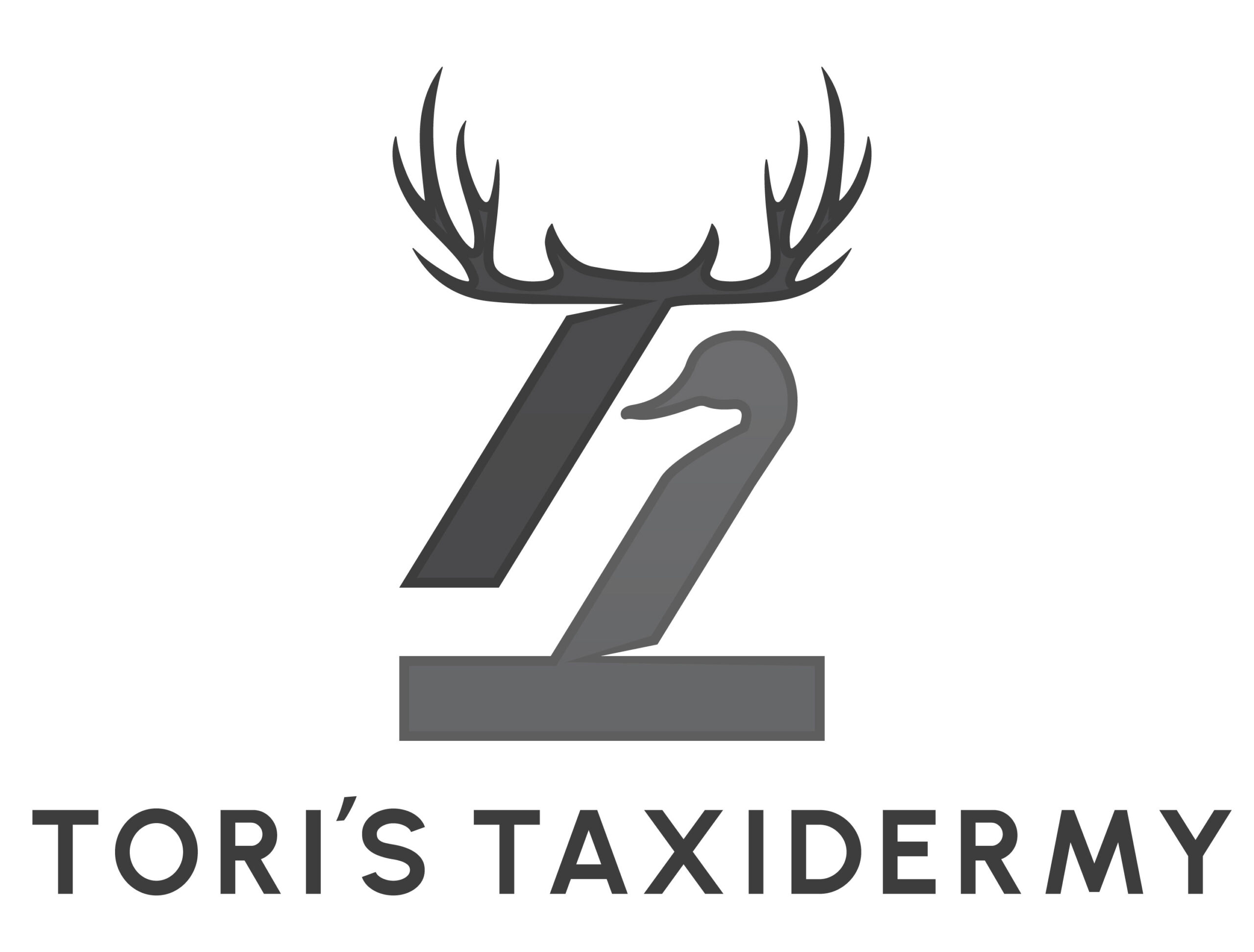Deer head mounts fall into three primary size categories: pedestal, shoulder, and full head displays. Pedestal mounts show only the head and upper neck, creating a more compact display suitable for smaller spaces or multiple mount arrangements. These mounts typically measure 12-18 inches in height and work well in offices, dens, or areas with limited wall space.
Shoulder mounts include the head, neck, and upper shoulder portion, providing a more substantial presence and realistic appearance. These mounts typically measure 24-30 inches in height and 18-24 inches in width, making them the most popular choice for home displays. The additional shoulder area creates better proportions and allows for more natural positioning.
Full head and neck mounts extend further down the neck, creating an even more dramatic display. These larger mounts require more wall space and work best in rooms with high ceilings or large open areas. They typically measure 30-36 inches in height and provide the most impressive visual impact.
Selecting Appropriate Head Positioning
The head position significantly affects the mount’s overall character and space requirements. A straight-ahead position creates a formal, symmetrical appearance that works well in traditional settings. This positioning requires less wall space and fits well in hallways or above furniture pieces.
A slight left or right turn adds personality and movement to the display. This positioning creates a more lifelike appearance and can help the mount interact better with room layouts. Consider the room’s traffic flow and viewing angles when selecting turn direction.
Extreme left or right positions create dramatic impact but require more wall space and careful placement. These positions work best in corner displays or rooms where the mount can be viewed from multiple angles. They also help create the impression of movement and alertness.
Antler Spread Considerations
The antler spread significantly impacts mounting requirements and display options. Narrow spreads (less than 18 inches) allow for more flexible placement options and work well in smaller spaces. These mounts fit comfortably in standard rooms without overwhelming the space.
Medium spreads (18-24 inches) represent the most common trophy size and work well in most residential settings. These mounts provide an impressive presence without requiring excessive wall space or special accommodation.
Wide spreads (over 24 inches) create dramatic displays but require careful space planning. Ensure adequate clearance from furniture, doorways, and other obstacles. These mounts work best in larger rooms or areas specifically designed to accommodate their size.
Wall Space & Clearance Requirements
Measure available wall space carefully before selecting mount size and positioning. Allow at least 6-8 inches of clearance on all sides of the mount to prevent a cramped appearance. This clearance also allows for proper appreciation of the mount’s proportions and details.
Consider ceiling height when planning mount placement. Standard 8-foot ceilings can accommodate most shoulder mounts when properly positioned. Higher ceilings allow for more dramatic positioning and larger mounts.
Account for furniture placement and room traffic patterns. Ensure the mount doesn’t interfere with door swings, furniture positioning, or normal room activities. The mount should add to the room’s function rather than limiting it.
Style Selection Based on Home Decor
Traditional home decor accommodates most mount styles, particularly classic shoulder mounts with natural positioning. These homes often feature wood paneling, stone fireplaces, or rustic elements that complement hunting displays. Choose mounts with traditional habitat bases or simple wood plaques.
Contemporary homes require more careful style selection to maintain design coherence. Consider sleeker mount presentations with minimal bases or modern mounting hardware. The mount should complement the home’s clean lines and uncluttered aesthetic.
Rustic or cabin-style homes provide the most flexibility for mount displays. These settings naturally accommodate hunting trophies and outdoor themes. Consider more elaborate habitat displays or multiple mount arrangements in these environments.
Habitat Base Options
Habitat bases add realism and visual interest to deer mounts. Forest settings with branches, leaves, and natural elements work well for woodland deer species. These bases typically add 4-6 inches to the mount’s overall dimensions.
Prairie or field settings suit deer harvested in open country. These bases feature grasses, small shrubs, and earth tones that complement the mount’s natural coloring. They typically require less depth than forest settings.
Minimal or no habitat bases create cleaner, more contemporary displays. These options work well in modern homes or spaces where the mount needs to blend with existing decor. They also reduce the mount’s overall size requirements.
Seasonal & Regional Considerations
Consider the deer’s seasonal condition when selecting mount style. Deer harvested during rutting season often display swollen necks and more aggressive expressions. These characteristics affect mount proportions and positioning options.
Regional deer subspecies vary in size and coloring. Northern deer tend to be larger with different coat colors than southern subspecies. Choose mount styles that complement these natural variations and regional characteristics.
Local hunting traditions and cultural preferences may influence mount style selection. Some regions favor more traditional presentations, while others embrace contemporary or artistic approaches.
Budget & Quality Factors
Mount quality varies significantly based on craftsmanship, materials, and attention to detail. Higher-quality mounts feature better proportions, more realistic details, and superior longevity. Consider the mount’s intended display location and personal importance when setting budget parameters.
Basic mounts provide acceptable quality for casual displays or temporary presentations. Mid-range mounts offer better craftsmanship and materials for most home displays. Premium mounts feature superior artistry and materials for treasured trophies or prominent displays.
Factor in additional costs like transportation, installation, and display accessories when budgeting for mount projects. These expenses can significantly impact the total investment required.
Maintenance & Longevity Considerations
Different mount styles require varying levels of maintenance and care. Mounts with habitat bases need more frequent dusting and occasional touch-ups. Simple mounts with minimal bases require less ongoing maintenance.
Consider the mount’s expected lifespan and your long-term display plans. High-quality mounts can last decades with proper care, while lower-quality options may require replacement or refurbishment sooner.
Environmental factors in the display location affect mount longevity. Areas with high humidity, temperature fluctuations, or direct sunlight may require more frequent maintenance or special protective measures.
Professional Consultation Benefits
Experienced taxidermists provide valuable guidance on mount selection based on the specific deer and intended display location. They can recommend appropriate sizes, styles, and positioning based on their expertise and experience.
Professional consultation helps avoid common mistakes in mount selection and placement. Taxidermists understand the technical requirements and can suggest solutions for challenging display situations.
Consider visiting multiple taxidermists to compare styles and approaches. Different practitioners may offer varying perspectives on the best mount options for your specific needs and preferences.
